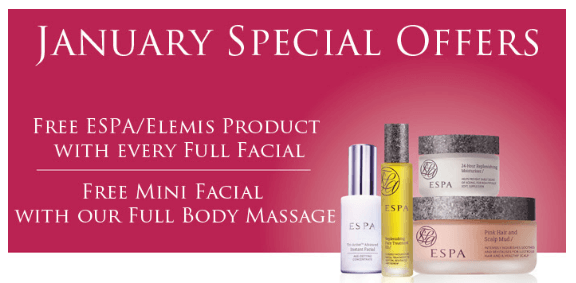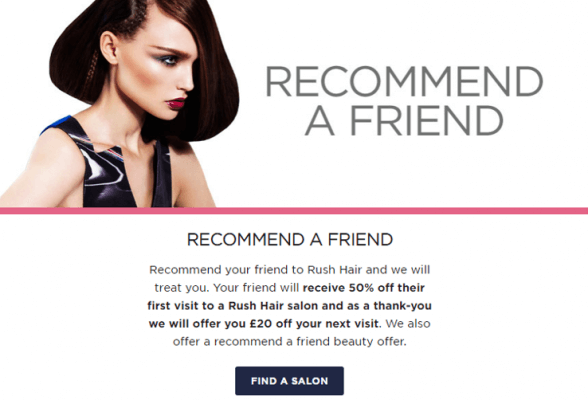New Year, New You! This phrase is something of a cliché but that doesn’t stop people from believing in the message. Every year people go into the New Year with an idea of how they want to better themselves, resulting in them making New Year resolutions.
These resolutions are fantastic for businesses to get extra revenue instead of experiencing the post-Christmas lull: in particular, those in the health, beauty and fitness industries.
Two of the most popular New Year’s resolutions for 2017 are to ‘lose weight’ and ‘relax’, as well as generally wanting to look better each year, making this time of the year critical for health, beauty and fitness businesses.
Here are some ways that businesses can capitalise on the demand fuelled by New Year’s resolutions in 2017:
Offer new discounts
Discounts are a sure-fire way to get people through the door, however, this increase in traffic only lasts as long as the offer does, meaning that businesses are not able to retain this uplift. There are other ways of offering discounts which encourage return visits to enjoy the savings.
For example, if you are a gym owner you may see a rise in memberships in January, with many hitting the treadmill to achieve their resolution to ‘lose weight’, but this initial spike in members will probably drop off completely by March.
Research by Bupa in 2015 showed that 43% of the British public polled lasted less than a month with their resolutions, 66% lasted one month or less and a staggering 80% didn’t make it to the end of March.
Instead of gym owners discounting memberships in January to encourage people to sign up, they should instead work out a system where they encourage sign-ups for a set period of time, such as three months.
When that time has passed, they receive a month free or discounted membership as a reward for their loyalty. This would take the new members past March and should have them properly integrated into a gym routine that should stick.
It also means that if they do still decide to leave after a month the gym owner hasn’t lost money by discounting their first month.

Source: Virgin Active
Virgin Active offer a similar model, giving a free month when a 12 month contract is signed. For many this may be too much of a commitment as financial situations change over the course of a year, however the strategy is effective, i.e. only offering the discount of a free month when 12 are secured.
Similar models work in the health and beauty industry as well, for example, book two facials and get your third facial for free and so on. These offers encourage return visits which could see these clients being retained as regulars.
Add Value
Many businesses are moving away from discounts as a way of attracting new business, because they don’t want to appear to be reducing the value of their services/products. Many are choosing to ‘add value’ instead.
Ian Horsham, divisional director for Promotions and Incentives, at The Grass Roots Group said: “Being viewed as being cheaper will hurt the long-term brand value and reel in fickle customers who won’t return if they spot a better bargain in the future.”
Adding value can be as simple as giving customers a little something extra for their custom. For example, if you are a beauty salon owner that offers facials, why not offer a free sample pack with all facials booked in January or February?
This way you are not only giving customers something for choosing to book with your business but you are also giving them the opportunity to sample the products that you use or sell in the salon as well. This approach can boost your retail sales as well as bookings while improving the relationship you have with existing customers who would have booked anyway.

Source: The Beauty Cabin
A real-life example can be seen at the Beauty Cabin in Biggleswade. They are offering a free product with every facial or a free mini facial with full body massages. This gives the client extra for their money while also giving the salon a chance to showcase products/other treatments while a full treatment is paid for.
Points systems
Loyalty cards and apps are a popular marketing tool used by many businesses, large and small. Although these are generally free, not making money directly, they work well as a way of encouraging clients to continue visiting the business over competitors.
One type of loyalty scheme works by giving points for services booked or products purchased. When enough of these points have been collected they can be exchanged for goods or another service.
The Guildford Spectrum Leisure Centre uses a points system via their ‘Active Card’. When you pay for certain activities at this leisure centre, or one of their sister centres, you collect ‘Metre points’; these add up and give access to rewards.
Rewards may be enough to sway potential members towards your business rather than a competitor who does not offer this type of scheme.
These loyalty schemes can involve some initial expenditure, particularly if you are having a physical card and want to market them with offline methods such as leaflets and posters.
For a small business it may be a stretch to come up with the funds after Christmas, however there are finance options that are accessible such as small business loans, which will give a cash injection and allow business owners to get their rewards scheme up and running.
Incentivise
One of your best methods of marketing will always be word of mouth. However many clients and customers need to be persuaded into spreading the word. This is where incentives come in handy, bringing in both discounts and added value.
If half of your clientele brought a friend with them imagine the increase in business. There is the likelihood that a lot of these new people wouldn’t stay for some reason or another but a few new faces could mean a spike in income.
Incentivising clients/customers to bring a friend for a free trial/session has two potential benefits, the increase in business from the friend signing up and encouraging the original client to stay loyal if their friend is also a customer there. This works particularly well in a gym situation.

Source: Fitness First
Fitness First, the UK Gym Chain, offer their members ‘Fitness Fridays’ as part of their memberships. This allows them to bring a friend for free every Friday. This allows members time at the gym with their friend and the friend is able to see the quality of the business without paying out money on a membership beforehand.
Hopefully if your business impresses the original member they will act as an (unpaid) ambassador promoting the gym that they are signed up to.
There are other ‘refer a friend’ schemes which have a more obvious benefit to the referrer and friend.

Source: Rush Hair and Beauty
Rush Hair and Beauty offer 50% off a first appointment to the friend that is being referred and for doing so they reward the friend with £20 off their next visit as well. This is a great way to boost business in the New Year, or all year round if you see a return on investment from the scheme.
Educate
A big reason why people fail to keep their New Year’s resolutions is due to not seeing results/the benefit straight away or by not understanding what they need to do to achieve them.
If a client has their hair cut and styled at a salon but is unable to reproduce the professional results at home when styling day-to-day, they may feel unsatisfied with the overall result. At a gym, if a member is not shown how to effectively use the machines they are likely to become frustrated with the lack of progress and quit altogether.
These outcomes can be avoided by offering to educate guests. Aiden Jones Weight Loss and Fitness, A neighbourhood gym in Biggleswade, Bedfordshire, offers a free one-to-one explanatory chat for people who wish to join in 2017, helping them set goals, giving them advice, as well as answering any questions they may have.
Educating customers, or potential customers, will build trust with the business, establishing them as experts.
Although these ideas are great to kick off the New Year, they are also great client building strategies that businesses can implement all year round.
Thanks for signing up to Minutehack alerts.
Brilliant editorials heading your way soon.
Okay, Thanks!




